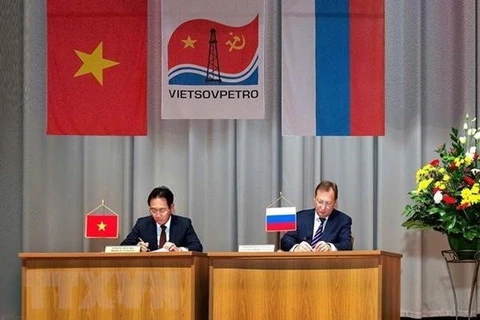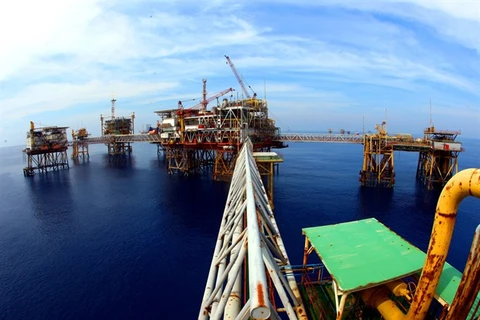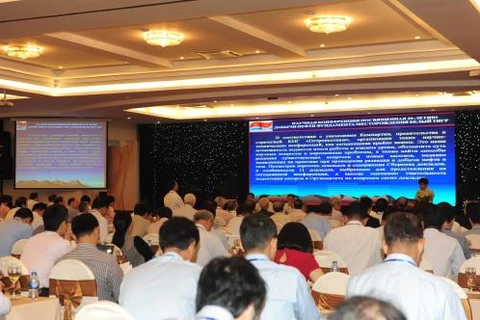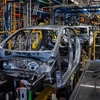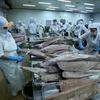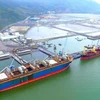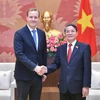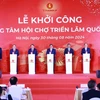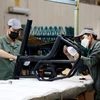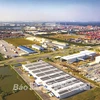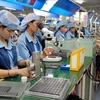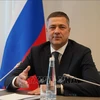Hanoi (VNA) – Since the Vietnamese Government and Italian contractor AGIP signed the first production sharing contract in 1978, foreign direct investment (FDI) in the oil and gas sector has not only brought large revenue to the country but also laid important foundations for the sector to develop strongly.
With the promulgation of the Law on Foreign Investment and the Law on Oil and Gas, FDI in the field, especially exploration and exploitation activities, has grown remarkably.
From the launch of the door-opening policy in 1986 through to November 30, 2015, Vietnam had signed 105 oil and gas exploration and production contracts with foreign partners, 39 of which have now expired.
According to the Vietnam National Oil and Gas Group (PetroVietnam), over the past 30 years, foreign contractors have invested 45 billion USD in oil and gas exploration and exploitation activities in Vietnam.
At present, more than 40 foreign oil and gas companies are investing in Vietnam. Among those are US-based Chevron and ExxonMobil, the Republic of Korea-based KNOC, Russia’s Gazprom, Malaysia’s Petronas, Thailand-based PTTEP, Spain’s Talisman and Repsol, as well as France-based Total and Neon Energy of France. Their investments have been made in the form of capital contribution to Vietnamese firms.
In addition, Vietnam has also inked cooperation deals with Russia to set up joint venture companies tasked with exploring oil and gas in the two countries.
With these cooperation activities, 38 out of the over 100 detected oil fields have been tapped.
During the period, Vietnam increased its annual oil and gas reserves to about 35-40 million tonnes of oil equivalent, with an average output of 15.5-17 million tonnes of oil and more than 9 billion cu.m of gas per year. In the period before 2015, the oil and gas sector annually contributed 20-25 percent of the total State budget and 18-25 percent of the national GDP.
Thanks to cooperation with foreign contractors, PetroVietnam has accessed and received modern technology transfers, acquired advanced management methods, and quickly integrated into the international oil and gas community.
More specifically, the Vietnam-Russia Oil and Gas joint venture company (Vietsovpetro) – a model of investment cooperation – has discovered and effectively exploited oil deposits in the basement of Bach Ho (White Tiger) and other oil fields in Vietnam.
The Vietnamese oil and gas sector has formed a group of technological solutions to tapping new forms of oil deposit that are unprecedented in global oil and gas history.
With this group of technological solutions, the natural energy of the oil deposit has been used thoroughly, with the highest oil recovery coefficient and the lowest oil field development cost, bringing in 88 billion USD from this kind of oil to the country.
According to the Vietnam Oil and Gas Association, cooperation with foreign contractors in oil and gas searching, exploration, and production has contributed to the birth of a series of major works in the field such as gas processing plants, gas-fueled thermoelectricity plants, and fertiliser factories serving the country’s economic development, modernisation, and industrialisation.
The sector has put into operation three key complexes for national projects, namely the Ca Mau Gas-Electricity-Fertiliser, the Southeast Region Gas-Electricity-Fertiliser, and the Dung Quat Oil Refinery.
The complexes are now operating effectively, contributing to ensuring national energy and food security, creating jobs for local labourers, and spurring socio-economic development of localities where they are based.
In addition, oil and gas technical services supply chains serving exploration and exploitation activities have developed strongly.
Many PetroVietnam member units like PetroVietnam Technical Services Corporation (PTSC), PetroVietnam Drilling and Well Services Corporation (PV Drilling), PetroVietnam Exploration and Production Corporation (PVEP) and PetroVietnam Engineering (PVE) are providing oil and gas technical services for not only domestic partners, but also regional and international contractors.
Annually, oil and gas technical services contribute nearly 30 percent of PetroVietnam’s total revenue and make up 10 percent of the group’s contribution to the State budget.
After 30 years of attracting FDI to the oil and gas sector, especially the process of oil and gas exploration and production with foreign contractors, PetroVietnam has now become a strong national oil and gas group that is able to engage in all oil and gas activities at home and abroad, as well as making strides alongside other national oil and gas groups in the region.-VNA
With the promulgation of the Law on Foreign Investment and the Law on Oil and Gas, FDI in the field, especially exploration and exploitation activities, has grown remarkably.
From the launch of the door-opening policy in 1986 through to November 30, 2015, Vietnam had signed 105 oil and gas exploration and production contracts with foreign partners, 39 of which have now expired.
According to the Vietnam National Oil and Gas Group (PetroVietnam), over the past 30 years, foreign contractors have invested 45 billion USD in oil and gas exploration and exploitation activities in Vietnam.
At present, more than 40 foreign oil and gas companies are investing in Vietnam. Among those are US-based Chevron and ExxonMobil, the Republic of Korea-based KNOC, Russia’s Gazprom, Malaysia’s Petronas, Thailand-based PTTEP, Spain’s Talisman and Repsol, as well as France-based Total and Neon Energy of France. Their investments have been made in the form of capital contribution to Vietnamese firms.
In addition, Vietnam has also inked cooperation deals with Russia to set up joint venture companies tasked with exploring oil and gas in the two countries.
With these cooperation activities, 38 out of the over 100 detected oil fields have been tapped.
During the period, Vietnam increased its annual oil and gas reserves to about 35-40 million tonnes of oil equivalent, with an average output of 15.5-17 million tonnes of oil and more than 9 billion cu.m of gas per year. In the period before 2015, the oil and gas sector annually contributed 20-25 percent of the total State budget and 18-25 percent of the national GDP.
Thanks to cooperation with foreign contractors, PetroVietnam has accessed and received modern technology transfers, acquired advanced management methods, and quickly integrated into the international oil and gas community.
More specifically, the Vietnam-Russia Oil and Gas joint venture company (Vietsovpetro) – a model of investment cooperation – has discovered and effectively exploited oil deposits in the basement of Bach Ho (White Tiger) and other oil fields in Vietnam.
The Vietnamese oil and gas sector has formed a group of technological solutions to tapping new forms of oil deposit that are unprecedented in global oil and gas history.
With this group of technological solutions, the natural energy of the oil deposit has been used thoroughly, with the highest oil recovery coefficient and the lowest oil field development cost, bringing in 88 billion USD from this kind of oil to the country.
According to the Vietnam Oil and Gas Association, cooperation with foreign contractors in oil and gas searching, exploration, and production has contributed to the birth of a series of major works in the field such as gas processing plants, gas-fueled thermoelectricity plants, and fertiliser factories serving the country’s economic development, modernisation, and industrialisation.
The sector has put into operation three key complexes for national projects, namely the Ca Mau Gas-Electricity-Fertiliser, the Southeast Region Gas-Electricity-Fertiliser, and the Dung Quat Oil Refinery.
The complexes are now operating effectively, contributing to ensuring national energy and food security, creating jobs for local labourers, and spurring socio-economic development of localities where they are based.
In addition, oil and gas technical services supply chains serving exploration and exploitation activities have developed strongly.
Many PetroVietnam member units like PetroVietnam Technical Services Corporation (PTSC), PetroVietnam Drilling and Well Services Corporation (PV Drilling), PetroVietnam Exploration and Production Corporation (PVEP) and PetroVietnam Engineering (PVE) are providing oil and gas technical services for not only domestic partners, but also regional and international contractors.
Annually, oil and gas technical services contribute nearly 30 percent of PetroVietnam’s total revenue and make up 10 percent of the group’s contribution to the State budget.
After 30 years of attracting FDI to the oil and gas sector, especially the process of oil and gas exploration and production with foreign contractors, PetroVietnam has now become a strong national oil and gas group that is able to engage in all oil and gas activities at home and abroad, as well as making strides alongside other national oil and gas groups in the region.-VNA
VNA

